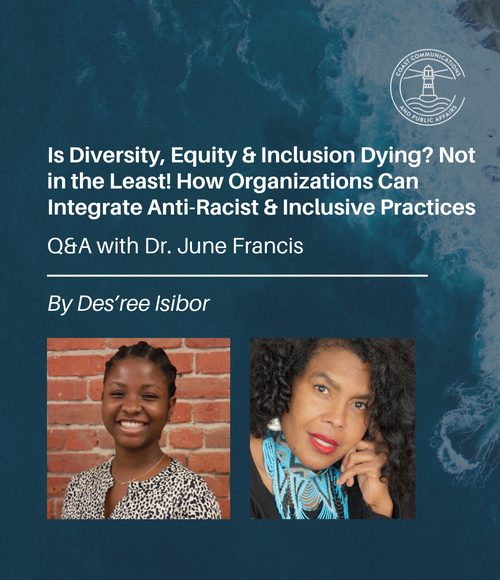We are all thinking about COVID-19 and the potential impact on ourselves, families, business and communities.
At Coast Communications and Public Affairs, we are also thinking about our clients and partners, several of whom we have been working with to predict, identify and mitigate COVID-19 impacts.
So, as effective communicators, what can we all apply from our knowledge of crisis communications to help our organizations be ready for an outbreak of significance or pandemic?
- What are the potential issues related to an outbreak that could impact your corporate reputation? Assess based on likelihood and impact, and chart that out on a graph. Be creative – COVID-19 is going to cause impacts beyond the normal type of crisis. Think business continuity planning. Think how emotional reactions and fear could intersect with your business. Think supply chain interruptions and how that could impact your customers.
- Focus on the high impact/high likelihood and determine what you can do to limit those impacts now.
- Are your contacts lists current? Has the organizational structure changed, impacting your telephone tree?
- You likely have new team members and even new executives that have arrived since you last practiced your crisis communications plan. Do a walk through with the team and even a quick rundown with your executive at their next meeting. This shows them you are prepared and helps them ensure the key steps are top of mind if you have to activate it
- Do you have the right team or consultants in place to activate your crisis communications plan? Don’t just consider day 1 but think ahead to day 4 or 5 when teams are burnt out and need a break. If your team has limited crisis and issues experience, consider seeking outside help.
- Don’t let great be the enemy of good on this one. Focus on risks, team assignments and contact lists. Tune up your overarching key messages. COVID-19 is going to be a slow burn type of crisis versus the typical operational crisis that hits hard and fast.
- Ensure you have someone on point to speak to media if you end up on the front line of COVID-19. Maybe you are a large retailer that is the first to close because of lack of staff? Maybe you are a government organization that can’t deliver essential services to citizens? Be ready for media inquiries.
- What is the number one driver of media stories? Of course, it has to be new, but aside from that it’s conflict. Be ready for media calls about points of conflict, with you and your customers, regulator or supply chain, or within your organization with your own staff. Team refuses to deliver service to the public because of fear? That makes a great story.
- Your chance of responding well goes up if you can get the jump on issues. Watch social media for trends, examples of competitors being called out for actions media are concerned about, or even other countries. Use the data to help see trends and gain insights.
Coast Communications and Public Affairs is a data-driven corporate communications and public affairs team with extensive experience planning for and responding to crises of all types and are trained in the Incident Command model. We are available 24-7 at 604.767.0207 or info@coastcomms.ca.
Key Messages in a Crisis
A crisis hits – you need to develop a response. But full key messages may not be possible in the first phase when you are still learning more about what happened.
Don’t worry – we have a solution for that – the CAC model:



